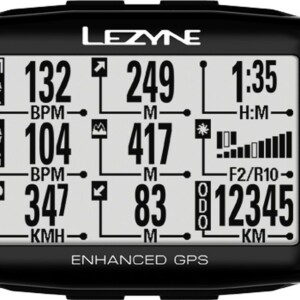The team behind the innovative MIPS helmet system have gone head to head with Bontrager following the much-publicised release of WaveCel technology during the week.
Licensed to a number of helmet manufacturers and major brands, the MIPS system claims to reduce rotational forces that might be transmitted to the brain.
Helmets equipped with this technology can reduce the amount of this force via the interior ‘MIPS’ capsule being able to move as much as 15mm upon impact – effectively adding another dimension of energy absorption.
WaveCel also absorbs energy, but in multiple ways. Instead of using the internal cradle system, WaveCel helmets feature a collapsible cellular material that lines the inside of the helmet.
“On impact, the layers of the WaveCel material move independently and flex until the cell walls crumple and then glide, actively absorbing direct and rotational energy and redirecting it away from your head,” say Bontrager, claiming the helmets to be up to 48-times more effective than traditional helmets in preventing concussions.

“This three-step change in material structure—flex, crumple, glide—is remarkably effective at dispersing the energy from an impact. Nearly 99 times out of 100, WaveCel can help prevent concussions from common cycling accidents,” added Bontrager.
The MIPS camp dispute Bontragers claims, however they do say that anything that makes cycling safer is ultimately good for the sport.
Here is the MIPS statement in full, and we look forward to your comments on this and all our articles. Have your say below.
The MIPS Statement
As the leader in the field of rotational motion solutions for helmets, MIPS subjected the new WaveCel helmet technology to their battery of tests, with results far below WaveCel’s substantial claims of injury prevention.
Yesterday morning, WaveCel, through its exclusive licensee Bontrager, announced a new set of helmets featuring their technology, a honeycomb-like insert that attempts to decrease linear impacts and duplicate MIPS’ proven ability to lessen the rotational motion associated with potential brain injuries such as diffuse axonal injury, subdural hematoma, and concussion.
WaveCel has made sizeable claims about the efficacy of this technology, stating on their website that it’s “up to 48x more effective at preventing concussions” than a regular EPS helmet, that “adding the WaveCel technology reduced [the incidence of concussion] to 1.2%,” and, via Bicycling magazine “the company says that a helmet with WaveCel will prevent a concussion 99 out of 100 times.”
Preliminary test results of WaveCel helmets by MIPS cannot substantiate these claims. While further testing is warranted, MIPS cannot see that the helmets perform in a way that the claims Bontrager/WaveCel makes in the comparison between WaveCel and other helmets/technologies.
MIPS’ position on evaluating the possibility of a concussion resulting from a crash is that it is a highly variable event and unique to the individual impact and rider physiology. No two crashes are the same and no two people are the same, so the risk of concussion is a near-impossible claim to make. However, rotational motion itself can be measured objectively, so that is the metric MIPS can actually report and address.
For over 20 years, MIPS has been researching brain injuries and designed its system to reduce rotational motion transferred to the brain from angled impacts to the head, keeping people safer in the outdoors, from casual beginners to professional athletes. MIPS has conducted more than 22,000 tests in their state-of-the-art test lab in Sweden. MIPS’ own Dr. Peter Halldin, with Dr. Hans von Holst, has authored several academic papers on helmet impact biomechanics since 2001.
While MIPS finds it encouraging that more and more brands are acknowledging the damaging rotational motion, there is still a lack of an industry-wide standard from third party testing organizations to ensure accurate information for consumers – something MIPS called out earlier this month.
“We at MIPS have conducted more than 22,000 tests and we know that not all helmets are equally safe, not even the ones that claim to address rotational motion”, says Johan Thiel, CEO of MIPS. “While we hope from a consumer standpoint that Bontrager’s claims are accurate, we are curious to see how it lives up to the tests conducted in our lab.”
“We are a company of scientists, so we’re approaching this in the spirit of collaboration inherent to scientific research. If together, we can make cycling safer for riders, then we will have honored our mission to make the safest helmets possible.”


